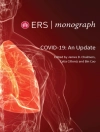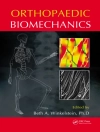A contemporary board review guide and MOC prep text all in one!
Certification from the American Board of Neurological Surgeons (ABNS) is the gold standard for certification of neurosurgeons practicing in the U.S. This text is the most up-to-date board review guide for neurosurgeons. It features actual cases, over 300 high-quality illustrations and images, clinical overviews, and a Q and A that mimics the ABNS exam format.
Uniquely qualified as esteemed experts in organized neurosurgery as well as past or present Directors of the ABNS, the editors have compiled a book of remarkable depth and scope. With contributions from top neurosurgeons in each subspecialty, this text will prepare neurosurgeons for the rigorous ABNS exams.
This indispensable book will help neurosurgeons and neurosurgical residents prepare thoroughly for written and oral board examinations, and benefit board-certified neurosurgeons who need to fulfill MOC requirements.
Tabella dei contenuti
<p><strong>I Cerebrovascular</strong><br><strong><em>A Neurovascular Anatomy (Imaging, Anatomy, and Clinical Correlation</em></strong><br>1 Anterior Circulation Vascular Anatomy and Stroke Syndromes<br>2 Posterior Circulation Vascular Anatomy and Stroke Syndromes<br>3 Cranial Venous Anatomy and Clinical Correlation<br>4 Spinal Vascular Anatomy and Clinical Correlation<br>5 Extracranial Head and Neck Vascular Anatomy and Clinical Correlation<br><strong><em>B Subarachnoid Hemorrhage</em></strong><br>6 Subarachnoid Hemorrhage: Workup and Diagnosis<br>7 Intensive Care Unit Management of Aneurysmal Subarachnoid Hemorrhage<br>8 Cerebral Vasospasm<br>9 Ruptured Intracranial Aneurysms: Indications for Microsurgery<br>10 Ruptured Aneurysms: Indications for Endovascular Treatment<br><strong><em>C Unruptured Aneurysm</em></strong><br>11 Unruptured Intracranial Aneurysm Natural History<br>12 Unruptured Intracranial Aneurysm Microsurgical Treatment<br>13 Unruptured Intracranial Aneurysms: Endovascular Treatment<br><strong><em>D Atherosclerotic Disease</em></strong><br>14 Asymptomatic Carotid Disease<br>15 Symptomatic Extracranial Carotid Artery Stenosis<br>16 Extracranial Carotid Stenosis: Stent Indications<br>17 Intracranial Atherosclerosis: Medical and Interventional Management<br>18 Intracranial Atherosclerosis: Indications for Surgical Revascularization<br><strong><em>Moyamoya</em></strong><br>19 Moyamoya Disease in Adults<br>20 Moyamoya Disease in Children<br><strong><em>F Dissections</em></strong><br>21 Extracranial Traumatic Dissections<br>22 Extracranial Spontaneous Dissections<br>23 Intracranial Hemorrhagic Dissections<br><strong><em>G Vascular Malformations</em></strong><br>24 Cerebral Cavernous Malformation<br>25 Natural History of Brain Arteriovenous Malformations<br>26 Treatment of Brain Arteriovenous Malformations<br>27 Developmental Venous Anomaly<br><strong><em>H Fistulas</em></strong><br>28 Dural Arteriovenous Fistula<br>29 Spinal Dural Fistula and Arteriovenous Malformation<br>30 Carotid Cavernous Fistulas<br>31 Vein of Galen Aneurysmal Malformation (VGAM)<br><strong><em>I Ischemic Stroke</em></strong><br>32 Intravenous Revascularization for Acute Stroke<br>33 Endovascular Revascularization for Acute Stroke<br>34 Decompressive Craniectomy for Malignant MCA Infarct<br>35 Cerebral Venous Sinus Thrombosis<br>36 Spontaneous Intracranial Hemorrhage: Correction of Coagulopathy<br>37 Spontaneous Intracerebral Hemorrhage<br>38 Spontaneous Cerebellar Hemorrhage<br>39 Intraventricular Hemorrhage<br><strong><em>J Vasculitis</em></strong><br>40 Temporal Arteritis<br>41 Intracranial Vasculitis<br><strong>II Functional Neurosurgery: Epilepsy, Movement Disorders, and Chronic Pain</strong><br><strong><em>A Epilepsy</em></strong><br>42 Patient Selection for Epilepsy Surgery in Adultsb<br>43 Epilepsy Surgery<br><strong>B Movement Disorders</strong><br>44 Deep Brain Stimulation for Parkinson Disease<br>45 Deep Brain Stimulation for Essential Tremor<br><strong><em>C Pain</em></strong><br>46 Trigeminal Neuralgia<br>47 Ablative Procedures for Neuropathic Pain<br>48 Spinal Cord Stimulation for Failed Back Surgery Syndrome<br><strong><em>D Spasticity</em></strong><br>49 Intrathecal Baclofen Therapy<br><strong><em>E Normal Pressure Hydrocephalus</em></strong><br>50 Idiopathic Normal Pressure Hydrocephalus<br><strong>III Pediatrics</strong><br>51 Neurological Assessment of Neonate, Infant, and Young Child<br>52 Ventricular Anatomy and Neuroendoscopy<br>53 Cerebrospinal Fluid Dynamics: Hydrocephalus, Shunts, and Endoscopic Third Ventriculostomy<br>54 Arachnoid Cysts<br>55 Pediatric Gliomas<br>56 Pediatric Brain Tumors: Primitive Neuroectodermal Tumors<br>57 Pediatric Brain Tumors: Other (Non-PNETS, Nongliomas)<br>58 Pediatric Intramedullary Spinal Cord Tumors<br>59 Positional Plagiocephaly, Craniosynostosis, Syndromic Craniosynostosis<br>60 Chiari Malformations and Hydrosyringomyelia<br>61 Traumatic Brain Injury and Critical Care Management in Pediatric Population<br>62 Neural Tube Defects and Encephaloceles<br>63 Pediatric Epilepsy: Surgical Management<br>64 Infections of the Central Nervous System in Children<br>65 Surgical Management of Spasticity<br>66 Neurovascular Disease<br>67 Genetic Neurocutaneous Syndromes<br>68 Congenital Brachial Plexus Injuries<br><strong>IV Spine</strong><br><strong><em>A Basic Science of the Spine</em></strong><br>69 Spinal Anatomy<br>70 Spinal Biomechanics Including Instrumentation<br>71 Pathophysiology of Axial Spinal Pain, Radiculopathy, and Myelopathy<br>72 Spinal Cord Injury<br>73 Complication Avoidance in Spine Surgery<br><strong><em>B Spine Imaging and Assessments</em></strong><br>74 Radiographs, Computed Tomography, and Magnetic Resonance Imaging<br>75 Electrophysiological Studies Including Intraoperative Monitoring<br>76 Evaluation and Treatment of Osteoporosis<br><strong><em>C Nonsurgical Management of Spinal Disorders</em></strong><br>77 Acute and Chronic Pain Management<br><strong><em>D Spinal Trauma</em></strong><br>78 Assessment of Spinal Instability and Classification<br>79 Cervicothoracic Spine Fracture Dislocation Injuries<br>80 Thoracolumbar Spine Injuries<br><strong><em>E Degenerative Spinal Disorders</em></strong><br>81 Disc Herniations<br>82 Stenosis/Spondylolisthesis/Spondylolysis<br>83 Degenerative Disc Disease: Artificial Discs and Motion<br>84 Revision Spine Surgery<br><strong><em>F Congenital Spinal Disorders</em></strong><br>85 Inflammatory Spinal Disease<br>86 Skeletal Dysplasias<br><strong><em>G Spinal Deformities</em></strong><br>87 Sagittal Spinopelvic Parameters and Measurements<br>88 Cervical Deformity<br>89 Thoracolumbar Deformity<br>90 Proximal Junctional Kyphosis<br>91 Spinal Osteotomies<br>92 Sacropelvic Fixation<br><strong><em>H Intrinsic Abnormalities</em></strong><br>93 Syringomyelia and Tethered Cord<br>94 Spinal Vascular Malformations<br><strong><em>I Spinal Tumors and Infections</em></strong><br>95 Primary Vertebral Column Tumors<br>96 Epidural Spinal Cord Compression<br>97 Primary Intradural Spinal Tumors<br>98 Infections of the Spine<br><strong><em>J Sports Medicine and Spine</em></strong><br>99 Athletic Spinal Injuries and Return to Play<br><strong><em>K Associated Spinal Topics</em></strong><br>100 Bone Graft Options<br>101 Guidelines, Outcomes, and Registries<br>102 Patient Access, Cost Effectiveness, and Ethics in Spine Surgery<br><strong>V Peripheral Nerve</strong><br><strong><em>A Traumatic Nerve Injuries</em></strong><br>103 Closed Brachial Plexus Trauma<br>104 Open Traumatic Nerve Injuries<br>105 Traumatic Nerve Injury and Neurotization Repair<br>106 Neonatal Brachial Plexus Palsy<br><strong><em>B Nerve Entrapment Syndromes</em></strong><br>107 Carpal Tunnel Syndrome<br>108 Pronator Teres Syndrome<br>109 Ulnar Nerve Entrapment at the Elbow<br>110 Thoracic Outlet Syndrome<br>111 Suprascapular Nerve Entrapment<br>112 Posterior Interosseous Nerve Palsy<br>113 Sciatic Notch Syndromes Including Piriformis<br>114 Meralgia Paresthetica<br>115 Common Peroneal Entrapment across the Fibular Head<br>116 Tarsal Tunnel Syndrome<br><strong><em>C Peripheral Nerve Masses</em></strong><br>117 Peripheral Nerve Sheath Tumors: Schwannomas, Schwannomatosis, and Perineuromas<br>118 On Evaluation and Treatment of Neurofibromas in Patients with Neurofibromatosis Type 1<br>119 Malignant Peripheral Nerve Sheath Tumors<br>120 Peroneal Intraneural Ganglia<br><strong><em>D Other Peripheral Nerve Problems</em></strong><br>121 Brachial Neuritis and Peripheral Neuropathies<br>122 Postamputation Pain<br><strong>VI Trauma and Critical Care</strong><br><strong><em>A Trauma</em></strong><br>123 Epidural Hematoma<br>124 Subdural Hematoma<br>125 Concussion<br>126 Severe Traumatic Brain Injury<br>127 Decompressive Craniectomy<br>128 Open Depressed Skull Fractures<br>129 Skull Base Fractures and Cerebrospinal Fluid Leaks<br>130 Penetrating Brain Injury<br>131 Blunt Carotid Arterial Injury<br>132 Pediatric Cephalohematoma<br>133 Child Abuse<br><strong><em>B Critical Care</em></strong><br>134 Anoxic Brain Injury<br>135 Pulmonary Embolism<br>136 Status Epilepticus<br>137 Brain Death Diagnosis<br>138 Neurogenic Shock<br>139 Meningitis<br>140 Brain Abscess<br>141 Hyponatremia/Adrenal Insufficiency<br>142 Hypernatremia (Diabetes Insipidus)<br>143 Posterior Reversible Encephalopathy Syndrome<br>144 Anticoagulation<br><strong>VII Tumor/Neurooncology</strong><br>145 Principles of Surgical Neurooncology<br>146 Management of Brain Metastases<br>147 Malignant Gliomas<br>148 Low-Grade Glioma<br>149 Miscellaneous Focal Low-Grade Glial and Glioneuronal Tumors<br>150 Meningiomas<br>151 Pituitary Adenomas<br>152 Other Sellar Tumors/Anterior Cranial Fossa Tumors: Craniopharyngioma and Rathke Cleft Cyst, Anterior Cranial Fossa/Craniofacial Tumors<br>153 Ventricular Tumors (Colloid Cyst, Ependymoma, Central Neurocytoma, Miscellaneous Ventricular Tumors)<br>154 Pineal Region Tumors<br>155 Acoustic Neuroma<br>156 Posterior Fossa Tumors<br>157 Clivial and Calvarial Tumors</p>












